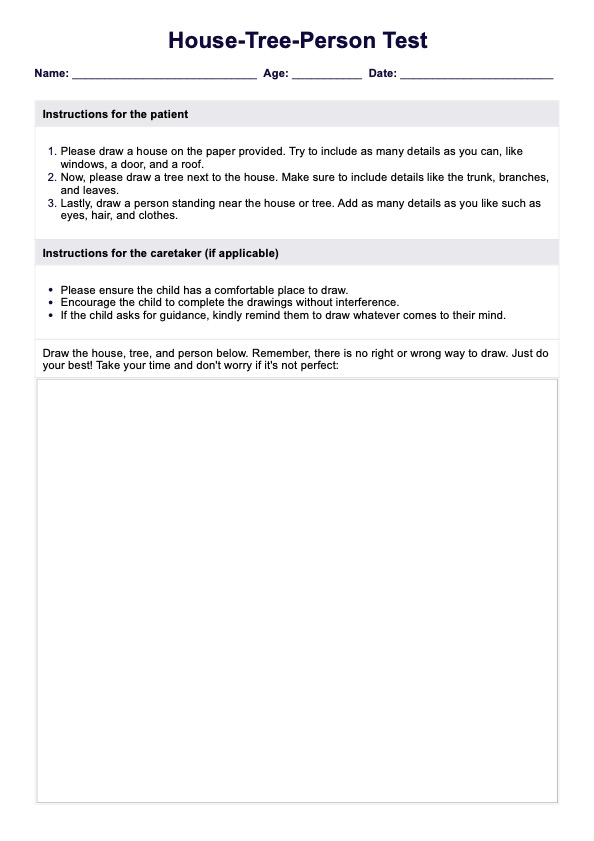The House-Tree-Person test is used to assess an individual's emotional state, personality, and underlying psychological issues through their drawings of a house, a tree, and a person.

House-Tree-Person Test
Understand clients' emotions and personality through drawings through the House-Tree-Person Test, a simple yet insightful psychological tool. Try it now.
Use Template
House-Tree-Person Test Template
Commonly asked questions
In the House-Tree-Person test, individuals are asked to draw a house, a tree, and a person, and they may be asked to describe their drawings or tell a story about them.
The House-Tree-Person test is commonly used with children but can be applied to individuals of any age to assess their psychological state.
EHR and practice management software
Get started for free
*No credit card required
Free
$0/usd
Unlimited clients
Telehealth
1GB of storage
Client portal text
Automated billing and online payments











